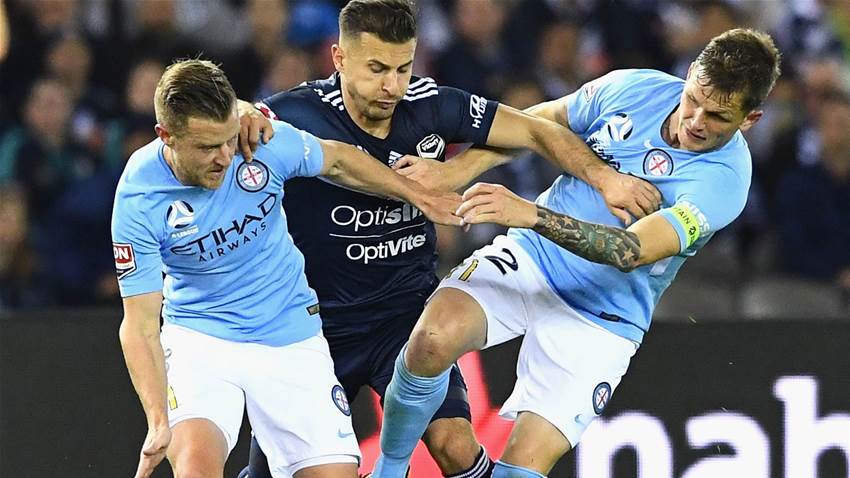The first Melbourne Derby of the 2017/18 season ended in delight for Melbourne City, who posed problems for Victory throughout the match which largely went unanswered.
Victory’s inconsistent response
Late in the second half, Victory seemed to have come across an answer to the question of how to remove the obstructions to being able to build up through the middle. When his team were in possession, Milligan dropped all the way between the two centre-backs, in turn allowing the full-backs to push higher up the field, which created space in the middle of the pitch as a result.
A tactic similar to this has been employed by top-flight teams in the past, such as Bayern Munich under Pep Guardiola and more recently Mauricio Pochettino’s Tottenham side. The ‘extra’ central defender provides the necessary cover to allow the full-backs to have more confidence to progress up the pitch, whilst at the same time maintaining their width.

City’s take on positional play
Positional play is a relatively recent advancement in tactical knowledge, and is generally attributed to a development on the idea of Total Football. Popularised by Guardiola’s Barcelona, positional play, or Juego de Posición, is based upon the principle of occupying spaces within a set formation.
This differs to Total Football, which is more related to complete freedom on the pitch and the releasing from a traditional system to allow for more creative expression. In this sense, former Manchester United reserves coach Joyce employed a tactical approach which contained elements of positional play, which directly contributed to their good performance.

This was particularly evident in two key areas, with the first being during build-up from the goalkeeper or centre-backs. Remembering that positional play is based on filling specified zones and maintaining balance on the pitch, this defensive-to-middle third rotation occurred as follows:
- One, or both of, the holding midfield pair drops vertically towards the player with the ball. In the example above, it can be seen that the left-sided holding midfielder has dropped in order to offer an option behind the first line of pressure.
- The full-backs react to ensure balance across the pitch and the maintenance of two players on two lateral lines. Above, as the left holding midfielder has dropped, the left full-back must move forward in order to maintain balance. It can be seen that that both pairings of full-backs and midfielders operate diagonally to each other as indicated by the red line. This is important, as it ensures more difficulty for the defensive team who are now spread over multiple lines.
- If the full-backs are providing the width, the wingers move medially to position themselves in the relevant half-space, attacking an area of the pitch which has been identified by many as vulnerable, especially against teams which operate with a back four.
- Stefan Mauk, the central attacking midfielder, moves into a position to receive the ball in an advanced position.
In doing so, City create a variety of different options for the player on the ball, which increases the likelihood of a successful construction of possession, which flows naturally into the creation of chances.
Related Articles

Victory's Machach wants to make amends in decider

Leckie seals new marquee deal as Good, Maclaren head to Asia
.jpeg&h=172&w=306&c=1&s=1)












